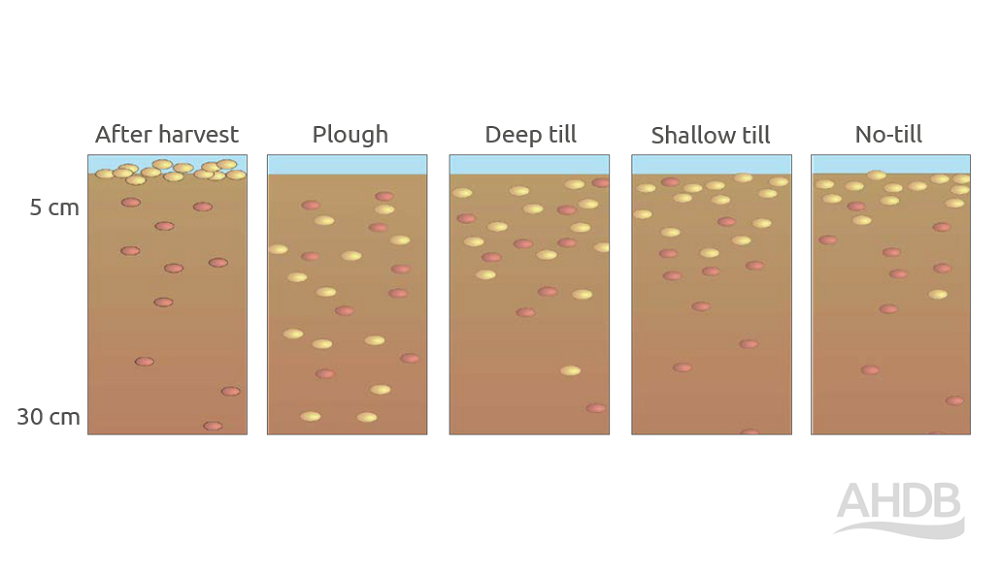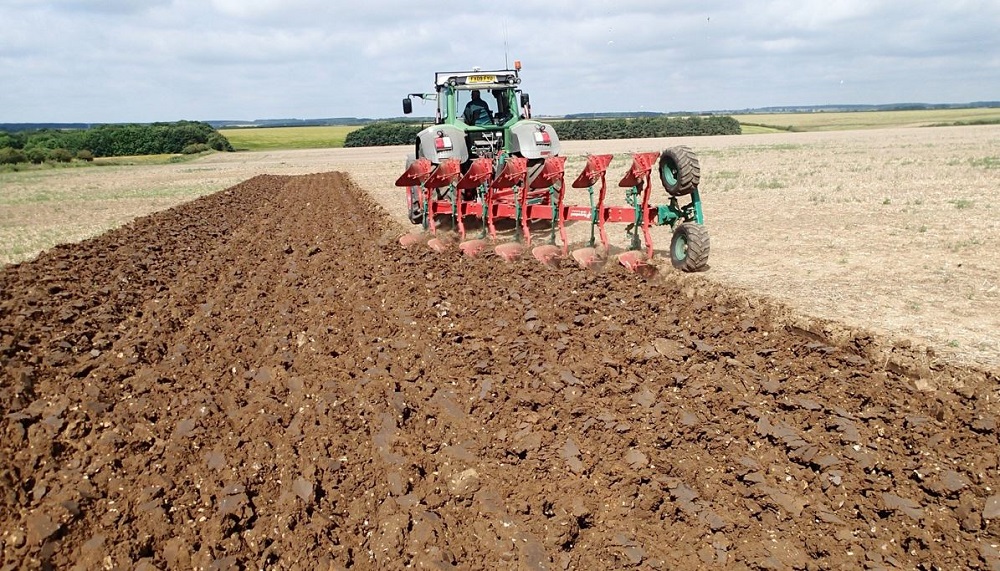- Home
- Knowledge library
- How cultivating affects the arable weed seedbank
How cultivating affects the arable weed seedbank
Cultivations stir the weed seedbank, burying freshly shed seed and bringing seed from lower down the profile to the surface. The extent of this mixing is heavily influenced by the cultivation approach.
How to manage weeds in arable rotations
Arable soil management: Cultivation and crop establishment
The importance of the pre-drilling window
The interval between harvesting a crop and the drilling of the next one provides an excellent opportunity to control weeds – usually with a combination of cultural (non-chemical) and chemical (herbicides) control.
The most appropriate cultivation technique depends on the situation, including the weed burden. However, a flexible and adaptable approach is usually the most successful. For example, shallow cultivate generally (to minimise surface disturbance) and plough occasionally (once in every 5 years or more). This is sometimes referred to as ‘rotational ploughing’.
Cultivations and the seedbank
Soil contains many weed seeds – the ‘seedbank’. Weed seeds are distributed throughout the soil profile, but usually only emerge from the top 5 cm.
Introduction to the weed seedbank
 AHDB
AHDB
Stubble cultivation
Shallow cultivation, immediately after harvest, can stimulate weed seed germination – if soils are sufficiently moist.
Plough
Typical cultivation depth: 20–40 cm
Ploughing inverts soil, burying 95% of freshly shed seed, as well as crop residues. However, it brings up 35% of old seed. Subsequent cultivations are more shallow, so buried seed is not disturbed. Most weeds germinate from seeds shed in previous seasons.
Generally, the approach reduces weed populations. The technique is most effective for weed species with short-lived seed, such as barren brome and black-grass. It is also a good option to consider when herbicide-resistant grass weeds are present or when weed populations are high (with the exception of wild oats). However, subsequent ploughing will cause some weed seeds to resurface – including species with a relatively long weed-seed longevity.
Ploughing can, along with deep cultivation, limit the effect of persistent herbicides to a following crop.
Deep till
Typical cultivation depth: 20–35 cm
Non-inversion tillage mixes the upper layer to a depth set by the cultivation. Germinating weeds are a mix of newly shed seeds and those from previous seasons – with percentages far lower than ploughing.
Shallow till
Typical cultivation depth: 5–10 cm
Non-inversion tillage mixes the upper layer to a depth set by the cultivation. At this shallow depth, relatively few old seeds are brought to the surface or buried below the germination depth.
No-till
Typical cultivation depth: 0 cm
With no-till, including autocasting, the soil is only cultivated by the drill. Weed seeds are predominantly in the top 3 cm, but some smaller seeds move down soil cracks. As a result, most freshly shed weed seeds are retained in the top 5 cm, where they can germinate. However, annual meadow grass, rye-grass, brome and black-grass can be difficult to manage in a reduced or no-till system, particularly in short windows between crops.
Other cultivations
Subcasting, using a subsoiler or modified cultivator, results in freshly shed seed falling down cracks but with little soil mixing. Using discs leads to more mixing – equivalent to deep or shallow till.
 AHDB
AHDB

